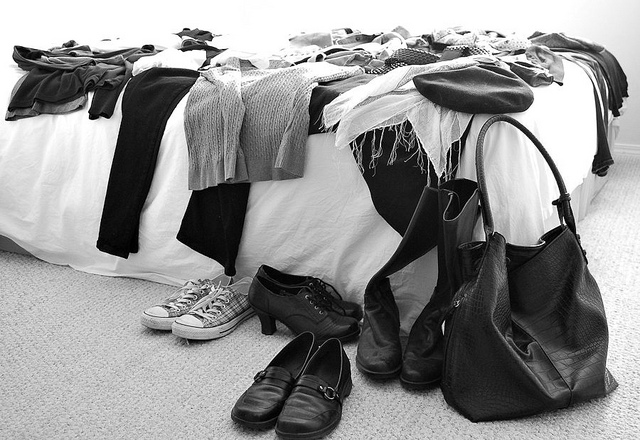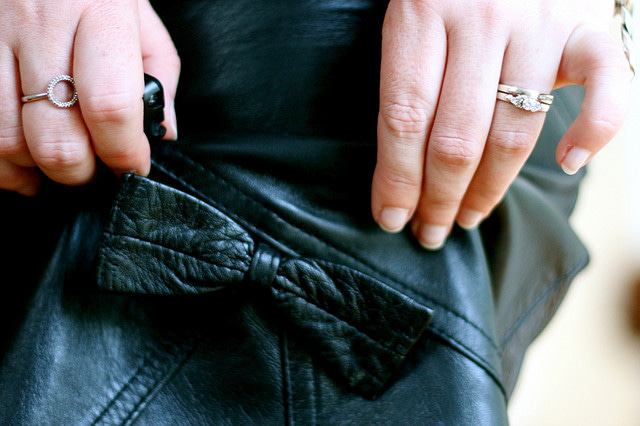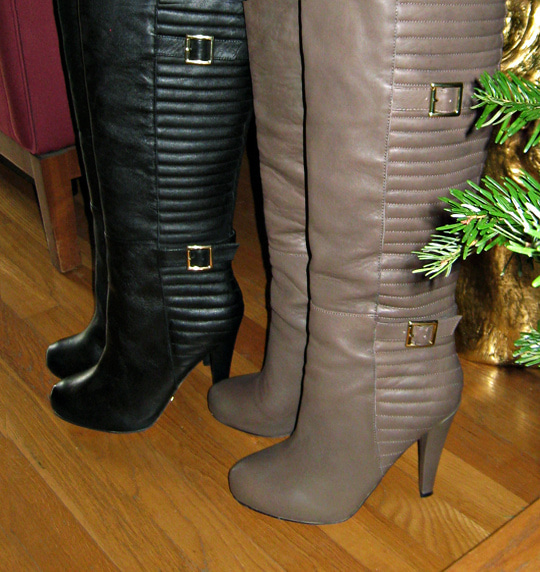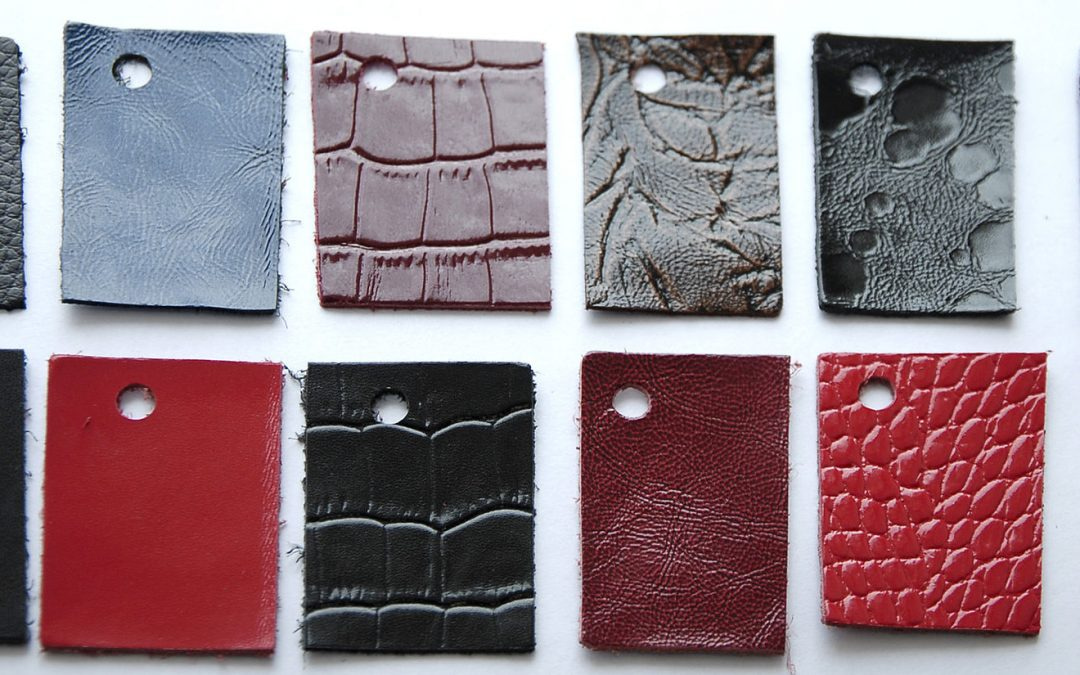
by Leather | Fashion, Leather Care |
In case you didn’t get the memo, the winter season is fast approaching. When the temperatures begin to drop, you can usually put away some of your warm-weather clothes and accessories until next year. Doing so will free up space in your closet/wardrobe, while making it just a little easier to find the “right” clothes. But how exactly should you store clothes for the winter? Clean Before Storing First and foremost, make sure your clothes have been washed and cleaned before storing them for the season. It’s not uncommon for people to wear a shirt or pair of pants, and then put it back in their wardrobe without washing it. As long as it’s not visibly dirty, there’s really no need to wash it — except when storing the garment for long periods at a time. So go through your wardrobe and pull out and wash any garments that you intend to store for the winter. Fold Them You aren’t out of the woods just yet. Before you can safely store your clothes for the winter, it’s recommended that you neatly fold them. Taking the extra time to properly fold your clothes before placing them in storage will reduce wrinkles while helping to retain the clothes’ original shape and structure. Choose a Storage Container You will now need to choose a storage container for your clothes. Most people choose cardboard boxes, simply because they are cheapest and most readily available. However, that doesn’t necessarily mean that they are the best choice. Cardboard boxes are susceptible to mold, mildew, and insects — three things that you want to keep away...

by Leather | Leather Care |
Do you own a leather garment or accessory that’s just not quite soft enough for your liking? Leather is prized for its strength and durability (among other things), but it can also be rough at times. As a result, some people seek to “soften” their leather so it’s supple and easier on the skin. The good news is that you can soften leather — something that we’re going to talk about in greater detail in today’s blog post. Store in Semi-Humid Environment One of the easiest ways to soften leather is to store it in a semi-humid environment. Because it contains thousands upon thousands of pores, leather fluctuates according to the surrounding moisture content in the air. When stored in a dry environment, leather will shrink and become stiff. But when stored in a semi-humid environment of 50-65% relative humidity, the opposite occurs: it expands and becomes softer. Consider installing a humidifier in your home to help soften your leather. Use a Leather Conditioning Product Of course, another easy way to make leather soft is to use a leather conditioning product, such as saddle soap for instance. Leather is unique from other fabrics and materials in the sense that it requires some regular maintenance to preserve its attractive characteristics. Failure to give your leather a little TLC will result in it becoming hard, stiff, and uncomfortable to wear. A leather conditioning product, however, helps to protect against the natural wear and tear of leather by adding valuable moisture to it. You see, saddle soap and similar conditioning products contain moisture that seeps into the pores of leather — much...

by Leather | Leather Care |
Winter is right around the corner, which means the temperatures will begin to drop, the air will become drier, and some areas may soon receive snow. The combination of these elements can wreck havoc on certain fabrics and materials, including leather. So if you own any leather garments or accessories, there are a few steps you should take to better protect them from damage this winter season. Watch the Indoor Humidity Levels We’ve talked about this before on the LeatherCult blog, but it’s worth mentioning again that dry air may damage leather, causing it to dry out and even crack in severe cases. Unfortunately, dry air is an all-too-common problem during the winter. When the temperature drops, the air becomes less dense and is therefore unable to hold as much moisture. To protect your leather garments and accessories from dry air, it’s recommended that you install a humidifier in your bedroom (or wherever you store the leather). Humidifiers will regulate the humidity level by releasing moisture vapor when needed. Protection from Rain Check the weather forecast before venturing outside with a leather jacket or other leather garment. While short-term exposure to rain shouldn’t cause any problems, constantly wearing your leather garments or accessories in the rain day after day will eventually cause damage. The moisture from the rain will settle down within the leather’s pores, promoting the formation of mold and mildew (never a good thing!). It’s bound to happen sooner or later, so when your leather garment becomes soaked in rain, dry it in a timely manner. All it takes is a couple of minutes to wipe it...

by Leather | Fashion, Leather Care |
Leather boots offer a certain level of style that’s not found in other types of footwear. Perhaps this is why is they are the “go to” choice among both men and women. But like all materials, even leather is susceptible to wear and tear, which is why it’s important for individuals to follow some steps to care for their leather boots during the winter. The winter season is characterized with low humidity, bone-chilling temperatures, and sporadic weather patterns. This create a unique challenge for leather boots, simply because these elements may damage the material. So, what’s the best way to clean and care for leather boots during the winter? Protect your shoes from drying out First and foremost, it’s important to note that most regions will experience low humidity levels during the winter. As the temperatures drop, the air is unable to hold as much moisture, at which point the humidity drops as well. When storing your leather boots — or any leather garments or accessories — make sure the surrounding environment has a relative humidity level of 40-50%. This will prevent the leather from drying out while keeping it fresh and protected from damage. Even if you store your leather boots in a climate-controlled area, you should still condition them on a regular basis. Saddle soap or similar conditioning products will add moisture to your leather, coating it with a protective layer that locks in its moisture. I recommend conditioning leather boots about once per month, rubbing the product into the surface until it’s no longer visible. Try to be conscious of where you step when wearing leather...

by Leather | Leather Care |
Leather is available in dozens of different types, one of which is bonded. Also known as reconstituted or blended leather, this is a special type of leather that’s made by shredding leather into small scraps and then coating them with polyurethane. The end result is a cheap, durable material that resembles genuine leather. However, there are both pros and cons associated with bonded leather that you need to be aware of. Advantages of Bonded Leather One of the most notable benefits of using bonded leather is the simple fact that it’s Eco-friendly. Bonded leather is made from the recycled scraps of existing leather, meaning it doesn’t require additional harvesting to produce. Bonded leather also offers the benefit of consistency. In other words, it has a consistent look and feel each time it is produced. This is in stark contrast to many other forms of leather, which have small but noticeable differences in their appearance. We can’t talk about the advantages of bonded leather without mentioning its price. Because it’s made from recycled leather scraps, it typically a costs a fraction of the amount of genuine leather. If you are looking for a cheap material that resembles leather, bonded is probably the way to go. Disadvantages of Bonded Leather Of course, there are also some potential disadvantages associated with bonded leather, including its unnatural look. Genuine leather looks natural, but bonded leather has a distinct artificial appearance. This is why bonded leather is rarely used in the production of jackets, shirts, pants or other garments. According to Wikipedia, bonded leather may also experience something called “off-gassing.” This occurs when plasticizers...

by Leather | Leather Care |
It you enjoy crafting and/or modifying your own garments and accessories, you might be wondering whether or not leather is a suitable material for sewing. Cotton, wool and other common fabrics are generally easy to sew. Using either a sewing machine or by hand, you can sew these fabrics with relative ease. But leather is thicker and rougher than cotton, adding a new dynamic to the otherwise simple process of sewing. So, does this mean leather is too thick to sew? Not necessarily, but it will take a different approach than sewing traditional fabrics and materials. Attempting to run genuine leather through a sewing machine just like any other fabric could damage either the leather or the sewing machine (or both). That’s why we’re going to provide some essential tips on how to sew leather. Choosing the Right Leather First and foremost, it’s important to note that certain types of leather are easier to sew than others. Ideally, you should choose the thinnest leather possible, as this will allow you to feed it through the sewing machine more easily. The thicker the leather, the greater the resistance, which often leads to the sewing machine jamming or not creating stitches in the correct places. Plan Your Stitches and Seams Ahead of Time The golden rule of sewing leather is to plan all of your stitches and seams ahead of time. Leather is far too easy to damage if you aren’t careful with the placement of your stitches and/or seams. And to further complicate the problem, there’s no way to “undo” damage to leather. Use a Sharp Needle Check your needle...








Recent Comments